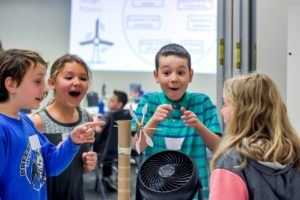Creating Green Partnerships to Promote Environmental Education

By Sharon Brusic, Charlton Wolfgang, Samantha Kress, and Kristen Sweet
Teaching young children is a huge responsibility. These impressionable boys and girls are like little sponges soaking up knowledge, skills, and experiences — often without even realizing that they are learning. Picture the curious girl chasing after lightning bugs on a summer evening or the inquisitive boy probing a parent with questions as they hike a woodland trail. Learning happens naturally for young children as they engage in play or interact in their natural environment.
In schools and other educational settings, teachers play a critical role in helping to form young minds and guide them to meet educational standards and curricular goals in all subject areas, including environmental education (EE). The preparedness and confidence of these educators is crucial to promoting little learners’ understandings. However, it has been shown that many early childhood educators lack these important traits in the science, technology, engineering, and math (STEM) content areas[1][2][3]. At Millersville University (MU) of Pennsylvania, USA, teacher educators recognized this problem and collaborated to develop and implement an optional undergraduate minor for early childhood education majors in Integrative STEM (iSTEM) Education Methods (ISEM)[4]. One area of focus has been on improving these future teachers as environmental educators who can effectively engage their Pre-Kindergarten-(Pre-K)-to-Grade-4 students in exploring their environment, investigating environmental issues, and developing an appreciation for making our world a sustainable one.
This content is restricted to subscribers only.
If you are not yet a subscriber, please consider taking out a subscription here.
If you are an existing subscriber, kindly log in or contact us at info@greenteacher.com for more information.










